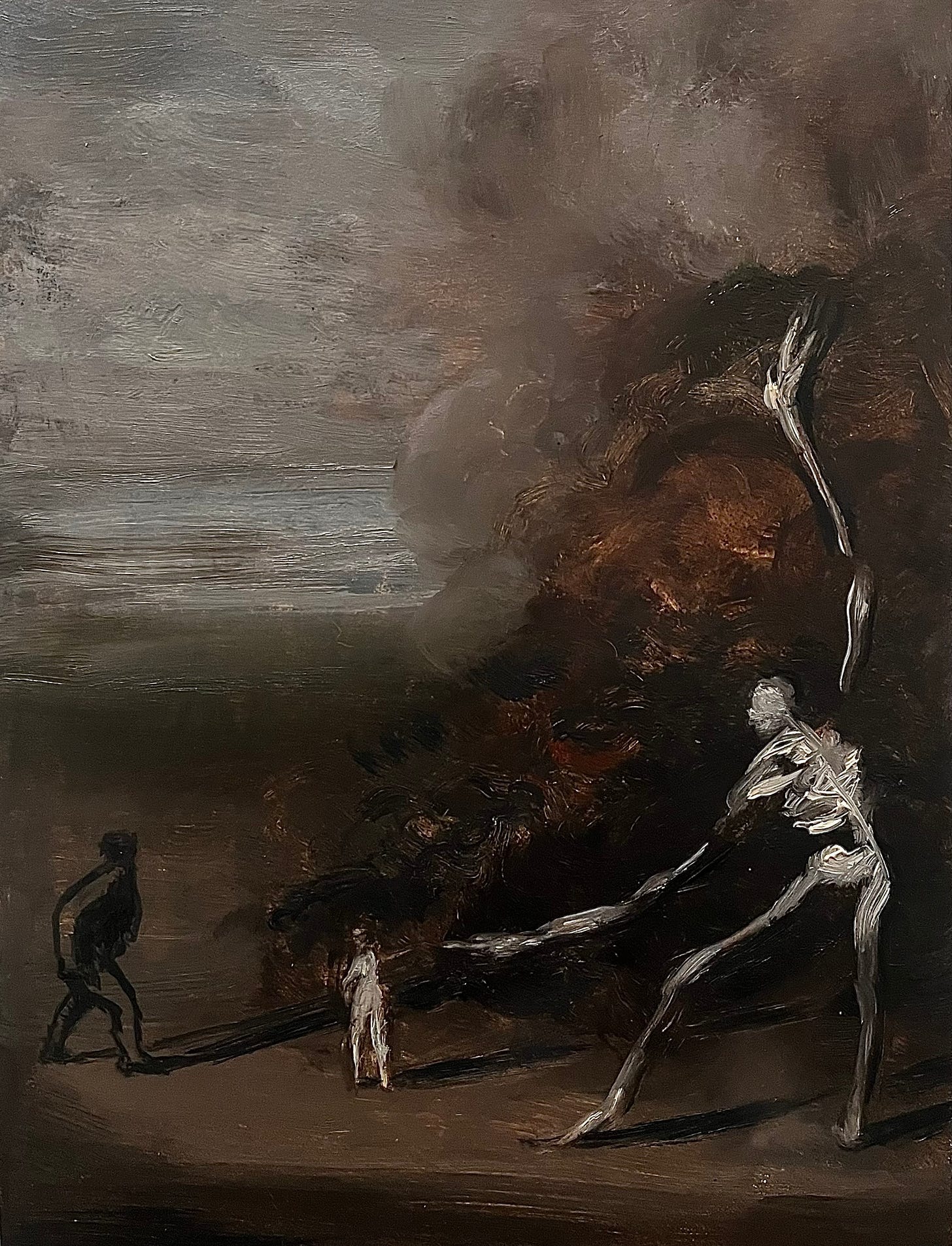Lisa Ivory
Mepaintsme spoke with the artist to discuss her process and how the uncertain evolution of a painting can give birth to meaning.
Lisa Ivory’s paintings invite us into a shadow world inhabited by skeletons, fleshy nudes, and vanishing steeds. In her work, the artist explores misbehaven symbols of death and earthly delights that lie in the deep recesses of the mind. Her luscious use of oil paint and darker, tonal palette, not only point to classical romanticism but also to a certain primal sexuality and close psychological connection between sex and death, desire and fear. In this eternal dance of decay and rebirth, Ivory’s choreography reminds us all of the existential inseparability of our internal and external worlds.
MPM: What led you to become an artist? Where there some formative experiences you had as a child that introduced you to art-making?
LI: I can’t remember a time as child when I wasn’t drawing, making something or concocting stories. As a toddler, I drew on rolls of lining paper -- great, long meandering forms and spindly horse-type creatures that I would say were “Shignals” (whatever they were). Before I knew what an artist was, I would say I wanted to be an animal when I grew up. I suppose making art is the same as the making up of stories and connecting with my inner creature.
MPM: What attracts you to working small as opposed to large?
LI: The scale of my paintings is partly a practical thing; as my studio is a tiny space, inevitably my work tends to be small. I wouldn’t rule out going bigger, but for now, my space doesn’t allow it. I do enjoy that intimacy of scale and how a little picture space can draw the viewer in, like peeping through a keyhole. Small things shout loud.
MPM: Are your painting's darker allegories unconsciously conjured through the process of painting or do you approach the works with ideas and imagery already in mind?
LI: I always have ideas beforehand but the process, the act of painting, suggests allegories and ideas. It doesn’t matter how much I plan it; there is always a dance-putting on paint, taking off, putting on, wiping off...the painting evolves almost like it’s changing its mind, not me changing mine. Very often, the physical act of applying or wiping off paint proposes an image and I change direction. The road to Ithaca has many detours… A bit like Goya’s using watercolour on his little paintings on bone/ivory. He allowed a drop of water to fall on the surface of a slither of ivory prepared with a black carbon ground, which lifted off parts of it. These fortuitous highlights became the basis for his painting. I like that serendipity - the element of chance in making work.
MPM: Which artists do you feel the most kinship with?
LI: There are so many artists I admire and feel kinship with. I have them as a bickering melee in my mind, all jostling, elbowing and shouting over each other. I think of Goya as family often and always come back to my gang: Daumier, Sickert, JJ Grandville, Ensor, Munch, Blake, Rego, Rembrandt, Francois De Nome…
MPM: In your newest work, linear drawings can mysteriously appear, almost like ghosts within dreams. How did these come about?
LI: I can’t really explain the ghostly drawings in a coherent way. I wanted to paint a drawing within a painting-two methods melding together. I like the idea of something transparent and linear superimposed over something more solidly painted. Those depictions of drawings have manifested over the years in different guises…I suppose they stand for the transient and ephemeral. Like I am being haunted by drawings that don’t exist yet.




